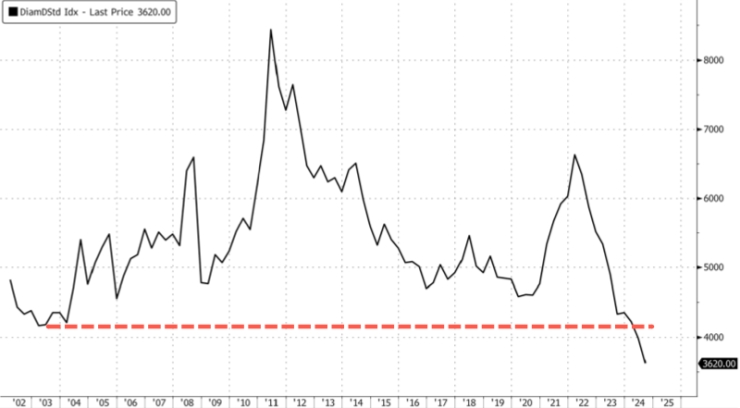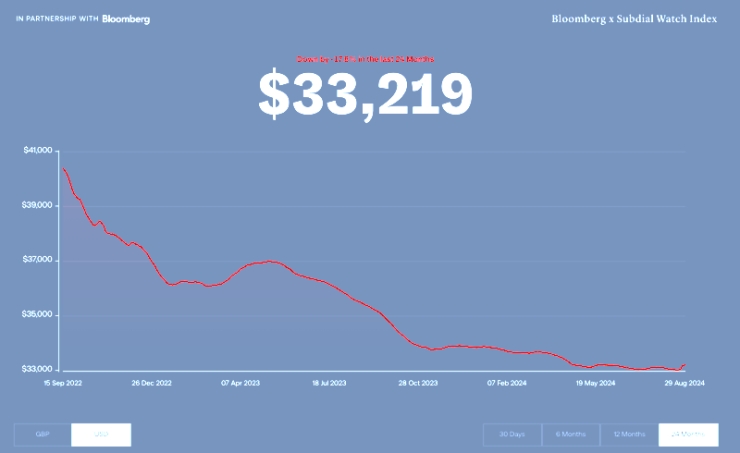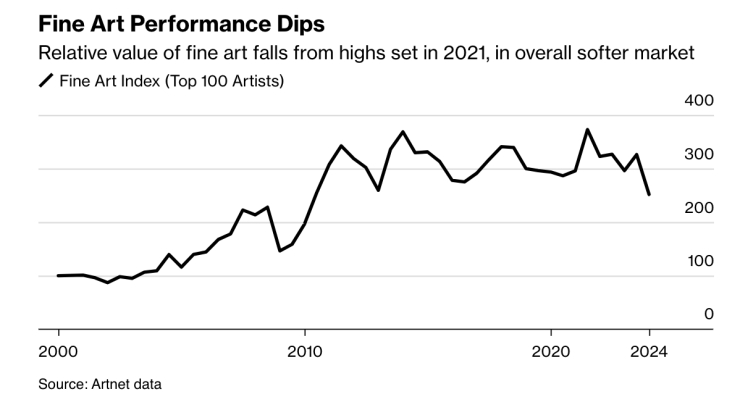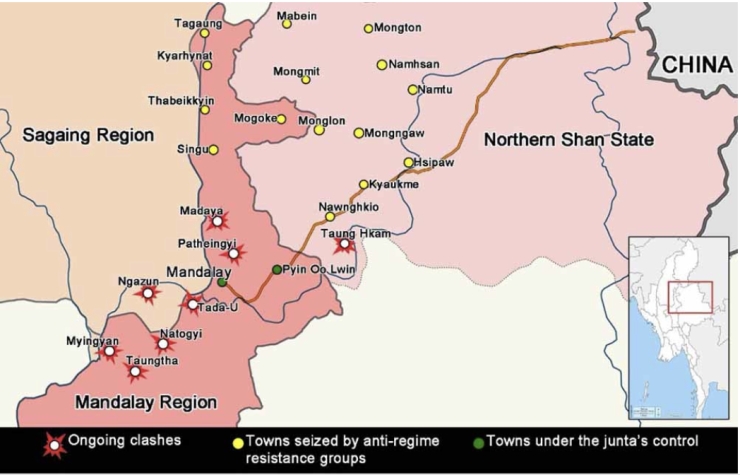Vol. 42, #3, Fall 2024
The "Old Money" Secret To Wealth, Gem News, Burma Gem News, Victoria's Secrets
- Home
- Newsletter
- Vol. 42, #3, Fall 2024
The "Old Money" Secret To Wealth, Gem News, Burma Gem News, Victoria's Secrets
I recently read an excellent article by James Rickards on Daily Reckoning about wealth preservation. It struck us how applicable the story is today and might really be of interest to some gem collectors.
He was trying to understand why some families have been able to retain their wealth over centuries. He contends we’re heading for another liquidity crisis or financial crisis. That doesn’t mean it’ll happen tomorrow, but it might not be too far off either. Investors who aren’t prepared could see large portions of their portfolios wiped out. It could take years to rebuild them, and many investors just don’t have the time to recoup those losses.
We all want to know how “old money” preserves its wealth. In the fall of 2012, Rickards joined a private dinner in Rome with a small group of the world’s wealthiest investors.
He dined at Palazzo Colonna, a private palace that’s been owned by one family for 31 generations or 900 years. His dinner companions were mainly Europeans, some Asians, and a few from the United States.
Old Money vs. New Money
The article states "Old money has proved they know how to preserve wealth over centuries, while the jury is still out on new money, busy buying yachts, jets and exotic vacations.
In the United States, the “old money” is generally about 150 years old, with fortunes dating to the mid-19th century. Families in this category include the Vanderbilts, Rockefellers and Carnegies. Some U.S. family fortunes are almost 200 years old. But most of the great wealth today isn’t old at all. Most new money comes from success in the past 30–50 years including Mark Zuckerberg, Jeff Bezos and Warren Buffett.
Yet in Rome he was harbored in a 900-year-old fortune still intact. Here was a family fortune that had survived the Black Death, the Thirty Years’ War, the wars of Louis XIV, the Napoleonic Wars, both world wars, the Holocaust, and the Cold War.
Rickards knew the Colonna family weren’t unique; there were other families like them throughout Europe who kept a low profile. These families are only too happy to be overlooked by the Forbes 400. That type of wealth and longevity could not be due merely to good luck.
In 900 years, too many cards are turned from the deck for luck alone to be sufficient. There had to be a technique."
How Do They Do It?
According to Rickards, "I turned to a striking Italian brunette to my right and asked, “How does a family keep its wealth for so long? It defies the odds. There must be a secret.”
She smiled and said, “Of course. It’s easy.” You just invest in “the things that last.” She added that the secret was, “a third, a third, and a third.” She paused, knowing I needed more, and continued, “You keep one third in land, one third in art, and one third in gold.” Her advice followed the first rule of investing — diversification.
She meant that wealth should be allocated one-third to land, one-third to gold, and one-third to fine art (of course, some cash is needed for operating costs and some business investment is fine also).
But the “old money” shows that true wealth preservation comes from art, gold, and land, rather than stocks and bonds.
That doesn’t mean you shouldn’t own stocks and bonds. You should — I own them myself. But for long-term wealth preservation, you should also dedicate a portion of your portfolio to the assets that “old money” invests in."
Diamonds Are Not Forever
Although the author makes a case for adding diamonds to the land-gold-fine art model portfolio, we break ranks with the Rickards here.
In our opinion white diamonds have two problems, including one really pressing issue.
Price Instability
We remember the prices of D-IF white diamonds in the early 1980's. When gold and silver crashed, D-IF diamonds followed. D-IFs went from $65,000 per carat to $15,000 per carat in a relatively short time. This is about the price you can buy these stones at today. Does it make sense to put your wealth in something that really hasn't done anything in 44 years? Forget keeping up with inflation. Investing in white diamonds would have been a bad investment.
Lab Created
Secondly, lab created diamonds are suddenly all the rage. The primary buyers are Millennials and Generation Zs. They are turned off by blood diamonds and feel (probably incorrectly) that the lab made diamonds are sustainable. Besides, since only the gemological labs can tell the difference, why buy the more expensive natural diamonds? This is an earth shattering change form previous generations who only wanted natural diamonds. We do not see this trend abating and consider it strongly negative for the white diamond market.
But there’s another old money style asset you might want to consider for your 25% portfolio: colored diamonds and precious gemstones.
Price Stability
Colored diamonds and colored gemstones have an enviable record of advancing prices throughout history. Occasionally, they dip in price but their corrections soon rejoin the larger upward trends. As a general rule when you buy a world class colored diamond or precious gemstone, you don't have to worry about its price declining rapidly. This price stability means a great deal to many people.
Immune to Financial Catastrophes
Based upon historical price data, quality colored diamonds and colored gemstones have proven themselves to be excellent long-term hedges against economic uncertainty and currency depreciation. The bottom line is high quality gemstones often operate in their own pricing cycles, almost irrelevant to world economic cycles. They will retain wealth during periods of high inflation, low inflation, and hyperinflation. Statistics show precious gems and colored gemstones even rose in value during the Great Depression (1929-1932) when nearly everything else crashed. Gemstones and colored diamonds have a history of being viewed as the ultimate portable safe haven during periods of war, currency devaluation, and financial panics. You could argue the world is experiencing all three at once today. Diamonds preserved wealth in Depression-era Europe. Gemstones have been used by wealthy families to escape state oppression in Europe, Russia, China, South America, and other parts of the world. Rare gems have often provided a new life for people escaping these catastrophes.
Portability
Gemstones are the most concentrated form of wealth known to man. A gem worth $100,000 fits in the palm of your hand, yet weighs less than a penny! You can carry gemstones in your pocket, and no one will be able to tell. Gemstones are highly portable and don't set off metal detectors or body scans at airports. Imagine trying to transport $100,000 in gold or silver through the airports!
Durability
Gemstones are relatively durable and will not change with time. They will still be here long after we are gone. Ever buried cash in your backyard? Dig it up in a few years and see the decomposition. Ever notice how silver becomes black because of the air? This will never happen to your gemstones. Just keep them safe in your home vault or your safety deposit box. No worries.
Gems are Anonymous and Private
Currently, gemstone and diamond transactions are not individually reported to governmental agencies. Can't say that with traditional investments. You can store your gems secretly in a bank vault or other secure location. This constitutes the extent of your maintenance. With colored gemstones and colored diamonds, there is a confidentiality of ownership. However, we do recommend consulting a professional tax advisor for your personal reporting requirements.
Increase in Value
Some of our recent clients have been mounting their stones in jewelry, contending this will increase the value of their gemstones. Although we are not certain about the validity of this expectation, we understand why many do not want to hide these beautiful gems away in their safety deposit boxes or their vaults. It's a rare investment you can enjoy in jewelry. Many plan to pass their investment along to future generations via this method.
Inherent protection
In some future crisis, when gold has spiked to $10,000 per ounce, a similar weight of colored diamonds and precious gemstones could take you into the tens of millions range!
And like land, gold or art, gemstones are nondigital. They cannot be wiped out by power outages, asset freezes, or cyber attacks.
Final Thoughts
Throughout history, royalty and the wealthy have coveted diamonds and precious gemstones. In order to improve on standard modern financial planning, maybe we can learn some secrets from old money. Although stocks and bonds are important and will no doubt remain a significant part of most portfolios, it might make a great deal of financial sense to further diversify your wealth with old money style enduring investments, including precious stones. Such investments are more likely to retain wealth long term, as opposed to stocks and bonds that are so easy for heirs to sell off quickly and without a second thought.
These top tier collectibles offer historical price appreciation and a hedge against financial Black Swan events. They represent the ultimate in portability, durability, and are extremely rare, private investments. As a bonus, high quality precious gemstones and colored diamonds offer perfect protection from power grid failures, terrorist attacks, and cyber criminals.
You want to create a portfolio that can stand the test of time. Land, gold, fine art, and colored diamonds/precious gemstones might be the ultimate investing secret.
You will see somewhat surprising weakness in the watch, wine, and auto collectible markets. However, remember we are talking about the middle, not the top tier collectibles. For example, 10 high end over cars over $10 million are expected to be auctioned this year. Sotheby's and Christie's are still selling billions per year. The high end precious gem and colored diamond markets are holding up strong, along with rare coins and top tier art. The difference, the top end is strong in most markets and middle weak in many markets (including gems). ED
The downturn in the diamond market is nothing short of breathtaking. Prices are in free fall as cash-strapped consumers have been shunning luxury goods, grappling with failed Bidenomics that unleashed an inflation storm and resulted in high interest rates. Compounding the issue, the rising demand for lab-grown diamonds has pressured the prices of natural stones.
According to Bloomberg data, citing the Diamond Standard Index, diamond prices have plunged to the lowest on record, with data going back to early 2002. The index has lost 45% of its value since March 2022.

Diamond Standard Index 2002-2025
Since diamonds are a consumer-driven market, the fierce bear market in prices signals that the industry is in trouble, as well as signals that low/mid-tier consumers are in trouble. In less than a week, Dollar General and Dollar Tree, with tens of thousands of stores nationwide, have warned that their core customer bases are under pressure. These discount retailers offer a unique glimpse into consumer sentiment that is not manipulated by government statisticians at the BLS.
De Beers, the world's largest diamond producer by value, recorded its worst year in two decades earlier this summer. Its parent company, Anglo American, recently announced plans to divest and spin off its 85% stake in the diamond subsidiary.
CEO Duncan Wanblad acknowledged the challenges De Beers has faced. In May, he said, "It is sitting at the bottom of a cycle. That cycle is more macroeconomic than fundamental."
The diamond and luxury goods industry was a major beneficiary of the helicopter money the US government dished out during the Covid era. However, as soon as pandemic savings dried up and the Biden-Harris team ignited an inflation storm through failed Bidenomics, consumers had to quickly dial back spending on diamonds, Rolexes, handbags, and Gucci loafers.
There has also been downward pressure from Gen Zs distaste for marriage. Some millennials are too broke to afford natural stones and have gravitated to lab-grown diamonds. In recent years, the rapid growth of artificial stones has pressured natural stone prices.
In addition to a collapse in diamond prices, the Bloomberg Subdial Watch Index, which tracks prices for the 50 most-traded watches by value on the secondary market, has sunk nearly 18% in 24 months.

Bloomberg Subdial Watch Index Sept 2022- Aug 2024
Looking at wine prices on the London International Vintners Exchange, the Live-ex Fine Wine 50 index has plunged below Covid lows, with a 5-year return of around 8.4%.

Live-Ex Fine Wine Index 2020-2024
Let's not forget that classic automobiles, such as Packard Roadsters and Ford Thunderbirds, or mainly classics before the 1960s, are not selling well at auctions. Baby boomers overpaid for these vehicles, while GenXers and millennials instead seek cars from the 1980s, 1990s, and 2000s, such as 911 Turbos. So much for the old folks trying to dump their 1930s Packards at auction bought a decade or two ago. The market is no longer there.
And the fancy artwork market reverses...

Fine Art Index 2000-2024
Overall, this note offers a view into consumer health. Low—and mid-tier households are certainly feeling recession-like pressures. Next up, a pullback in spending from higher income households?
Finally some good news from Burma. Mandalay, Myanmar’s second-largest city, is a crucial target for the resistance as anti-regime groups advance southwards following their capture of territory in northern Mandalay Region. Hopefully, the People’s Defense Force groups under the civilian National Unity Government (NUG) will defeat the military junta that started this civil war. ED
The Central Military Command headquarters at Mandalay Palace is facing a barrage of drone and rocket bomb attacks. The junta is scrambling to shore up its defenses as speculation mounts that the city is about to fall. Capturing Mandalay is seen as crucial to maintaining the revolution’s momentum and challenge to junta rule. The second city is the hub for military operations in the central region and reinforcements and supplies for upper Myanmar.
The map below shows how Mandalay city is being encircled by resistance attacks.

Image Courtesy: Irrawaddy
However, military analysts argue resistance forces must first seize the junta’s garrison town of Pyin Oo Lwin. This mountain fortress, located 74 kilometers east of Mandalay city, houses the Defense Service Academies and military training schools.
“Pyin Oo Lwin is located at a vantage point regarding Mandalay city. Resistance forces will be trapped if they attempt to seize the city without capturing the garrison town first,” a military analyst monitoring the resistance advance told The Irrawaddy. He explained that the junta could deploy reinforcements from Pyin Oo Lwin to Mandalay city along several routes.
Pyin Oo Lwin lies on the border with northern Shan State, where the ethnic Brotherhood Alliance has taken control of around 25 towns, including the northern Shan capital of Lashio.
Last month, the alliance’s Ta’ang National Liberation Army (TNLA) and allies, including Mandalay People’s Defense Force (PDF), seized Nawnghkio and Kyaukme, just over an hour’s drive from Pyin Oo Lwin. The defeats sparked an exodus from the garrison town as residents, including families of military personnel, fled.
TNLA forces then advanced along the Nawnghkio-Lawksawk road and overran two artillery battalion bases in Taung Hkam village, located an hour east of Pyin Oo Lwin.
Former captain Zin Yaw, who defected from the army, pointed out that resistance forces had to seize Taung Hkam before they march on the garrison town. Victory at Taung Hkam secured control of Nawnghkio township and prevented the junta from sending reinforcements from southern Shan State via the Nawnghkio-Lawksawk road.“If revolutionary groups seize Pyin Oo Lwin, Mandalay city will fall easily,” he said.
However, to seize the Central Military Command in Mandalay, resistance forces must first capture several battalion headquarters, including a major stronghold in the north of the city, Zin Yaw said. Meanwhile, the junta is bracing for an assault by beefing up defenses around Mandalay Palace and elsewhere in the city.
Resistance groups attacked Central Command headquarters with a dozen 107mm rocket bombs early Tuesday morning. They claimed seven bombs hit their targets, killing several junta personnel.
Mandalay PDF and allied resistance groups have so far seized at least 35 junta bases, including an air defense battalion headquarters in the north of Mandalay city and positions in the eastern suburbs.
Meanwhile, several PDF groups are conducting a coordinated offensive dubbed the Myingyan District Special Operation in four townships south of Mandalay. Zin Yaw cautioned, however, that to capture Mandalay city, PDF groups would need to leverage the decades of experience that ethnic armies have gained from fighting the Myanmar military.
The resistance takes back Mogok. Probably no gem production in the foreseeable future, but this helps. ED
BANGKOK (AP) — Ethnic armed groups claimed on Thursday to have captured two strategically important towns in northeastern Myanmar: Lashio, which houses the major regional military headquarters, and Mogok, the center of the country’s lucrative gem-mining industry. Their fall would be the biggest in a series of setbacks suffered by Myanmar’s military government this year, and raises questions about whether the ruling military council could be forced to give up trying to hold contested territory in order to consolidate a defense of the central heartland.
The ruling military council denied its Lashio headquarters had been taken over, and two town residents contacted by phone said fighting there was continuing. Phone contact with Mogok has been cut off, but video posted on social media appeared to show residents cheering the arrival of ethnic guerrilla soldiers.
Lashio, the biggest city in the northern part of Shan state, and Mogok, the ruby-mining center in the upper Mandalay region, have been the targets of an offensive by the MNDAA, the Myanmar National Democratic Alliance Army, and the TNLA, the Ta’ang National Liberation Army, since late June.
The MNDAA is a military force of the Kokang minority, who are ethnic Chinese, and the TNLA represents the Ta’ang, or Palaung, ethnic minority. The groups have been fighting for decades for greater autonomy from Myanmar’s central government, and are loosely allied with the People’s Defense Force, or PDF, the pro- democracy resistance that arose to fight military rule after the army ousted the elected government of Aung San Suu Kyi in 2021. The two armed groups are part of the Three Brotherhood Alliance, which last October launched a surprise offensive that succeeded in seizing large tracts of territory along the northern border with China. The current round of fighting marked an end to a January Chinese-brokered cease-fire that nominally stopped that fighting between the alliance and the army for almost six months. Beijing maintains close relations with both groups, as well as with the military government, and above all seeks stability in Myanmar, which is a strategic ally.
The MNDAA said in a statement published Thursday on its Facebook page that the group had completely captured the military’s Northeast Command headquarters in Lashio at 4 a.m. that morning, after 23 days of the fighting. The MNDAA had captured a regional military headquarters in Laukkaing, a key city on the Chinese border, during the earlier Three Brotherhood Alliance offensive, but the Lashio headquarters is more important. The MNDAA statement said its claimed capture of Lashio, about 110 kilometers (70 miles) south of the Chinese border, was a “historic victory.”
However, Maj. Gen. Zaw Min Tun, the spokesperson of the ruling military council, said in a message sent to the journalists on Thursday that the claims of the capture of the military command headquarters were untrue. He said the insurgents had infiltraded some neighborhoods on the outskirts of the city, and the army is fighting to clear them out.
“The loss of Lashio would be a major strategic blow for the regime,” Morgan Michaels, a Singapore-based analyst with the International Institute of Strategic Studies who runs its Myanmar Conflict Map project, said in an email.
“The city is home to the Northeast Command and is the junta’s last major line of defense in northern Shan State. There could be about 5,000 regime defenders in the city, so depending on what happens to them – whether they withdraw, surrender, or get destroyed—that could have an impact on the army’s overall force posture as well.”
The TNLA, in a statement published on the Telegram messaging platform, said it had completely captured Mogok after seizing all the military outposts and government offices there in a month of the fighting. Mogok, which is at the center of Myanmar’s lucrative gem mining industry, is about 110 kilometers (70 miles) northeast of Mandalay, the country’s second-largest city. It said it captured about 30 army soldiers and more than 200 weapons. However, the claims about Mogok’s capture could not be verified independently, with access to the internet and mobile phone services in the town area mostly cut off. “The capture of Mogok would be a significant victory for the TNLA and an embarrassing loss for the junta,” said analyst Michaels. “The Mogok Valley is the largest source of rubies in the world and provides enormous revenue-generating opportunities for the TNLA.”
World's most expensive bra: Victoria's Secret has long been known for its glamorous fashion shows, running annually from 1995 to 2018.
These shows helped launch the careers of countless supermodels, but one of the most coveted achievements for these models was wearing the exclusive Victoria’s Secret Fantasy Bra. This piece of lingerie, often adorned with precious gems, became a status symbol and a highlight of the runway.
The Fantasy Bra is not just a simple undergarment; it’s a dazzling creation worth millions. First introduced in the 1990s, these bras are designed with intricate craftsmanship, often encrusted with diamonds, sapphires, rubies, and other gemstones. Each Fantasy Bra has a hefty price tag, making it both a stunning costume and a symbol of luxury.
The first Fantasy Bra, the Million Dollar Miracle Bra, debuted in 1996 and was worn by Claudia Schiffer in advertisements. Valued at $1 million, it featured 100 carats of diamonds, but despite the steep price, it remains one of the most affordable in the Fantasy Bra lineup.
Most expensive bra in the world: Red Hot Fantasy Bra: Courtesy DNA
The most expensive Fantasy Bra ever created is the Red Hot Fantasy Bra, worn by Gisele Bündchen in 2000. Valued at an astonishing $15 million which is Rs 125 crore, this set featured 1,300 carats of diamonds and Thai rubies. It even earned a spot in the Guinness Book of World Records for the most expensive lingerie ever made, showcasing the height of extravagance in fashion.
Several other Fantasy Bras have also captured the spotlight. Supermodels like Heidi Klum, Tyra Banks, and Miranda Kerr have worn versions of the bra, each with unique designs and gem combinations. Pieces like the Champagne Nights Fantasy Bra worn by Lais Ribeiro in 2017 and the Fireworks Fantasy Bra worn by Lily Aldridge in 2015, each worth $2 million, demonstrate the luxurious reputation Victoria's Secret built over the years.
In conclusion, the Victoria's Secret Fantasy Bra is more than just an item of lingerie—it’s a breathtaking masterpiece of craftsmanship, glamour, and luxury. Over the years, it has become one of the brand’s most iconic pieces, showcasing the best of high fashion and elevating lingerie to a whole new level.